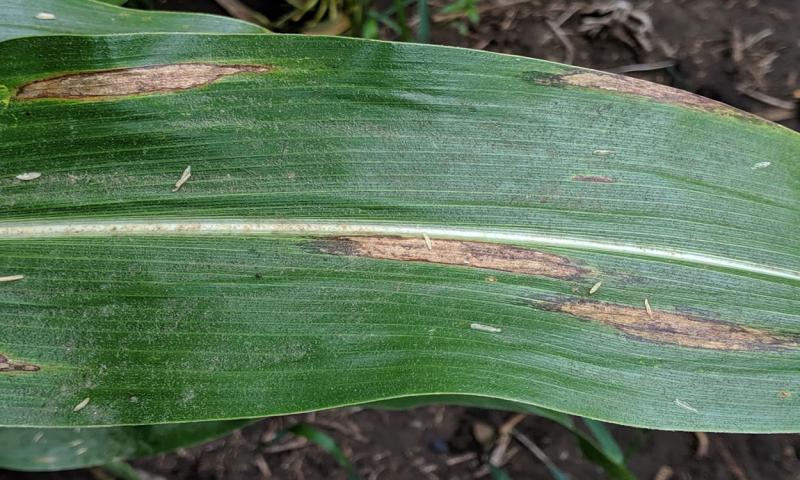
Originally written with contributions by Emmanuel Byamukama, former SDSU Extension Plant Pathologist.
Corn is currently at tasseling/silking across the state. This is usually the growth stage when a fungicide is applied to control fungal diseases. Gray leaf spot, northern corn leaf blight, common rust, and eye spot are the common fungal diseases which develop in corn. For the most part, these fungal diseases occur at a very low severity and have limited impact on yield with the exception of a few corn on corn fields where disease pressure may be high.
Given the low disease pressure in our environment, the question then is whether there is a positive return on a fungicide application to corn in our state. Based on small plot research done at SDSU Volga and Southeast Research Farms, there was no statistical difference between fungicide treated and non-treated plots. This was primarily attributed to low disease pressure (less than 3% on the non-treated) at the two locations. Results from last year’s trial can be viewed on the 2019 Corn Fungicide Field Trials Summary page. Previous year’s results can also be found on the extension website.

One disease that may be managed effectively from a fungicide application in corn is southern rust (Figure 2). This disease can be devastating especially if it develops early in corn before the dent growth stage. However, for the last five years, this disease develops quite late in the season and usually at a low severity that does not impact yield. Late planted corn, late maturing hybrids, and irrigated corn may have an elevated risk for southern rust. Most of the corn hybrids are susceptible to this rust.
Although some moderate level of fungal diseases may be observed in corn towards the later part of the season, this is usually after the dent growth stage where impact on yield will be limited. Some fields treated with strobilurin fungicides (QoIs, FRAC Code 11) do remain green longer; however, no grain fill can take place after the black layer growth stage in corn. Therefore, plants remaining green after this period do not increased yield.
The reason to apply fungicides should be solely to control fungal diseases. Unnecessary fungicide application not only reduce profits but could also lead to future fungicide resistance development.
Consider the susceptibility to common fungal leaf diseases, previous corn residue, if the hybrid is late maturing, and current disease level in the lower leaves when deciding whether a fungicide application is needed on tasseling corn. If a fungicide is decided upon, there are several fungicides on the market which are effective against common diseases in corn. See this publication for fungicide efficacy in corn produced by the extension plant pathologists in the region.


